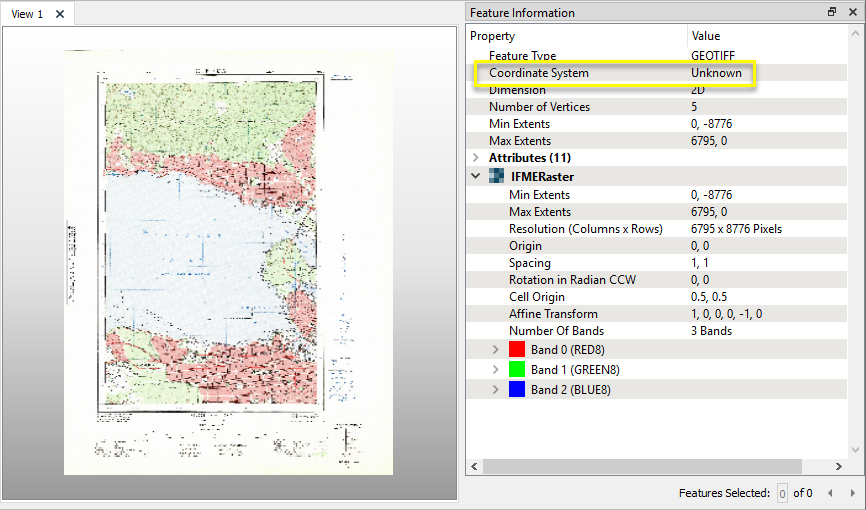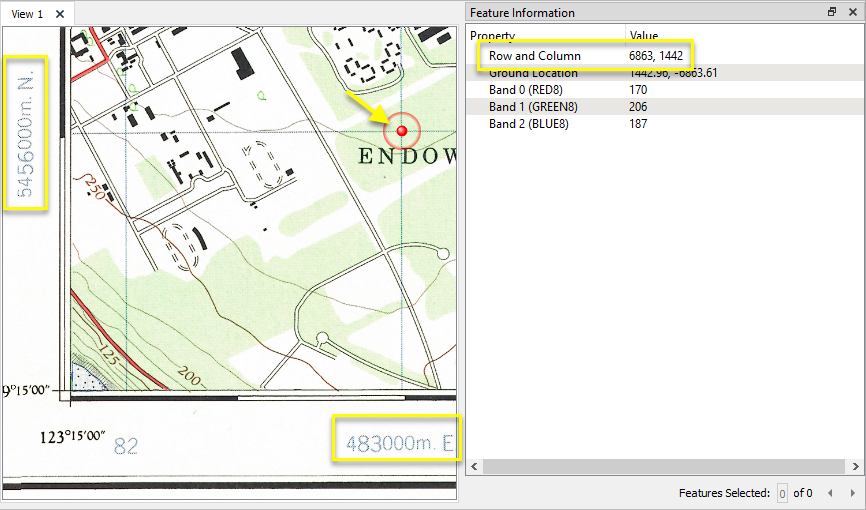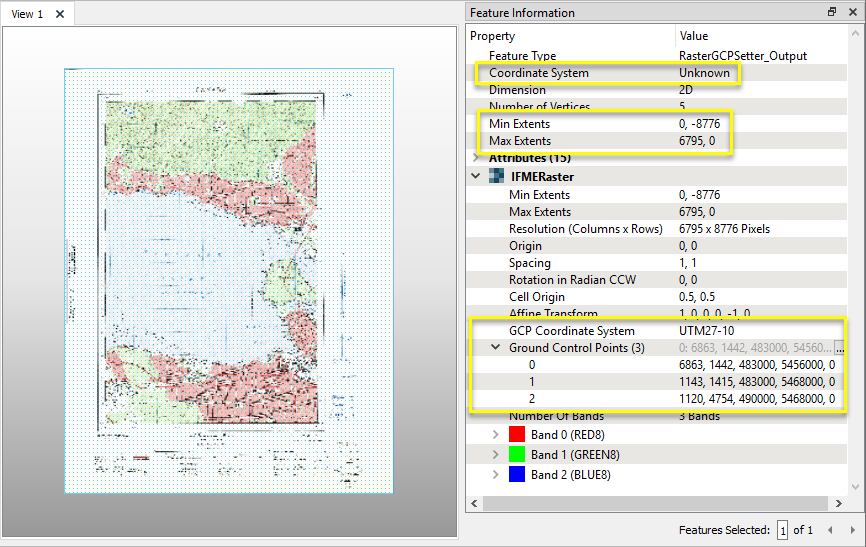In this example, we will add Ground Control Points to a scanned map. The original raster is a complete topographical map with grid lines showing northings and eastings.
Note that the raster’s coordinate system is not known - it is not currently georeferenced.

We want at least three GCPs to position the image, and we will identify those prior to configuring the workspace. The coordinate system is UTM27-10, as indicated on the map’s title block.
The first GCP is near the bottom left of the map, where two labeled grid lines intersect. Note that we can identify the cell position (row and column), where the northing and easting intersect.
The first GCP will pair the cell (1442, 6863) with the x,y,z coordinates (483000, 5456000,0). For the purposes of this exercise z is not important, and so is set to zero (0).

The same process is used to identify GCPs near the upper left and upper right corners of the map. Units are in meters, per the coordinate system identified.
|
GCP |
Cell x (Column) |
Cell y (Row) |
X-Coordinate (Easting) |
Y-Coordinate (Northing) |
Z-Coordinate |
|---|---|---|---|---|---|
|
Lower left |
1442 |
6863 |
483000 |
5456000 |
0 |
|
Upper left |
1415 |
1143 |
483000 |
5468000 |
0 |
|
Upper right |
4754 |
1120 |
490000 |
5468000 |
0 |
The raster is routed into a RasterGCPSetter.

In the parameters dialog, Source Coordinate System is set to UTM27-10.
The GCP Value parameter receives a string containing all of the identified GCPs. Each GCP is composed of five values, separated by spaces:
Column Row X-Coordinate Y-Coordinate Z-Coordinate
The individual GCPs are separated from each other by semicolons, producing this complete string:
1442 6863 483000 5456000 0;1415 1143 483000 5468000 0;4754 1120 490000 5468000 0

The output raster now has the GCPs stored as a property. However, they have not yet been applied to the raster to georeference it.

GCPs can be applied to the raster in appropriate raster format Readers, or in third-party tools that recognize GCPs.
Alternatively, to apply our GCPs, we will use a RasterGCPApplier transformer from the FME Hub.
This transformer has no parameters to configure.

The output raster is georeferenced, with a Coordinate System of UTM27-10 and Extents that reflect valid ground coordinates. It is shown here in the FME Data Inspector with a current streets shapefile overlaid in yellow for context.
Note that the Rotation and Affine Transform values are altered, which indicates the transformations caused by applying the GCPs, and that the GCPs have been removed from the raster properties.

 beside the applicable parameter. For more information, see
beside the applicable parameter. For more information, see